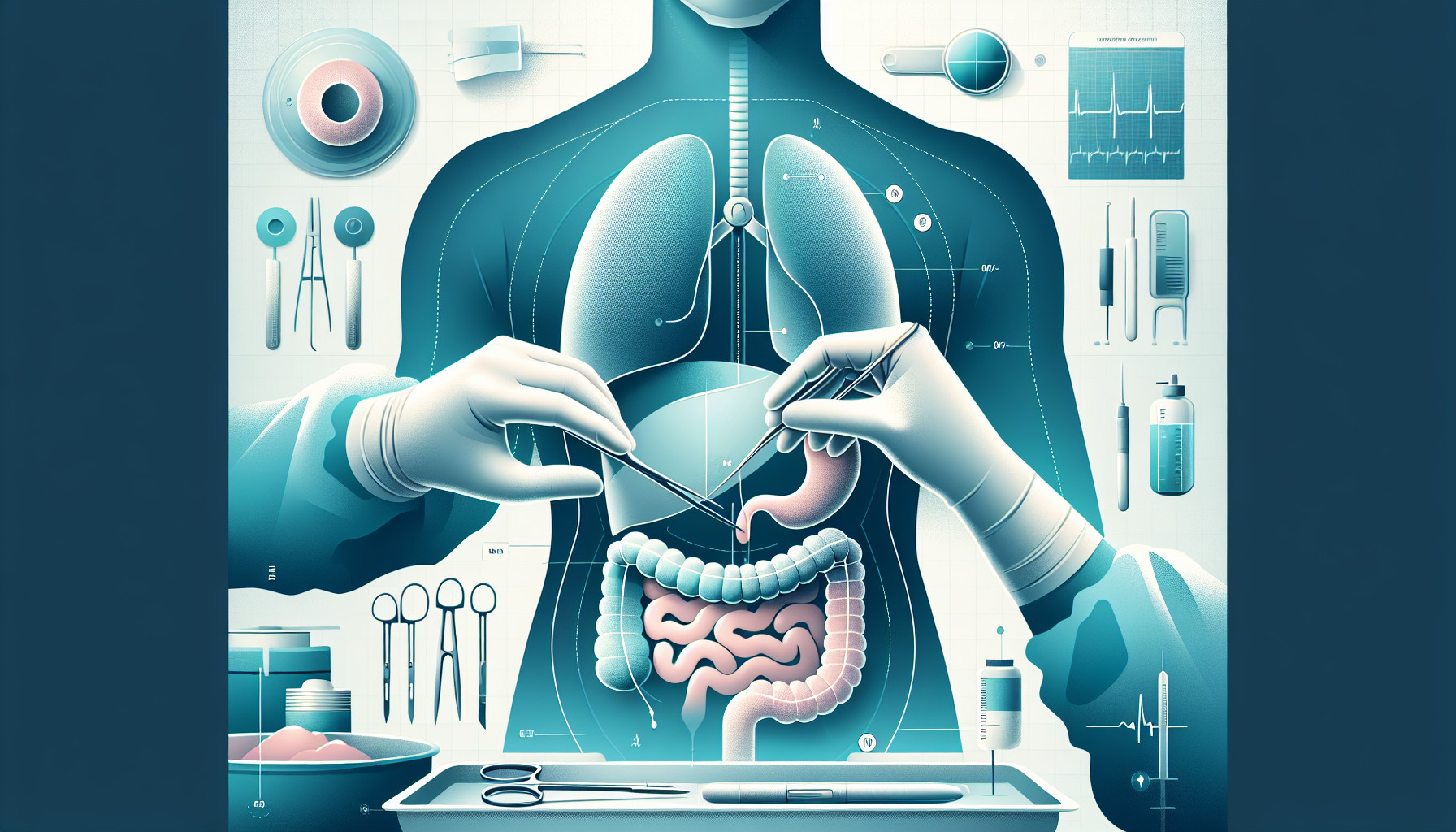Our Summary
This research paper discusses the causes and treatments of hiatal hernias following esophagectomy, a surgical procedure to remove parts of the esophagus. The study analyzes data from patients with esophageal cancer who had this surgery between 2018 and 2023.
Out of 161 patients who underwent an esophagectomy, 3.7% developed a hiatal hernia, a condition where part of the stomach pushes up into the chest area through an opening in the diaphragm. This typically occurred between 1 to 15 months after the esophagectomy.
The researchers found that these hernias were twice as likely to occur after minimally invasive surgeries compared to traditional open surgeries. The risk of developing a hernia was also higher when the left diaphragmatic crura (part of the diaphragm) was dissected, or cut into, during the surgery.
The study suggests that an active surgical approach should be taken when dealing with symptomatic hernias due to the high risk of strangulation (cutting off the blood supply) and the need for emergency surgeries. It also suggests that avoiding wide diaphragmotomy (cutting into the diaphragm), transection of the left diaphragmatic crus, and high abdominal pressure during the laparoscopic stage can lower the chances of developing a hernia.
Overall, the paper emphasizes the need for careful surgical procedures and strategies to prevent the occurrence of hiatal hernias after esophagectomy.
FAQs
- What is the likelihood of developing a hiatal hernia after undergoing an esophagectomy?
- Are there specific surgical procedures that increase the risk of developing a hiatal hernia post-esophagectomy?
- What surgical strategies can be taken to lower the chances of developing a hiatal hernia after esophagectomy?
Doctor’s Tip
A doctor may advise a patient who has undergone hiatal hernia repair to avoid heavy lifting, bending over, and strenuous activities for a certain period of time to allow the surgical site to heal properly. They may also recommend dietary changes, such as eating smaller meals and avoiding trigger foods that can exacerbate symptoms of acid reflux. Additionally, the doctor may suggest regular follow-up appointments to monitor the healing process and address any concerns or complications that may arise.
Suitable For
Patients who have undergone esophagectomy, especially those who had minimally invasive surgery and had their left diaphragmatic crura dissected, are typically recommended hiatal hernia repair if they develop the condition. Additionally, patients who experience symptoms such as reflux, chest pain, difficulty swallowing, or regurgitation may also be recommended for hiatal hernia repair to alleviate their symptoms and prevent complications.
Timeline
In summary, before hiatal hernia repair, a patient may experience symptoms such as heartburn, chest pain, difficulty swallowing, and acid reflux. These symptoms can worsen over time and may require medical intervention.
After hiatal hernia repair, the patient can expect relief from these symptoms and an improvement in their quality of life. The surgery typically involves repairing the opening in the diaphragm and repositioning the stomach back into the abdomen. Recovery time varies but most patients can resume normal activities within a few weeks. With proper post-operative care and lifestyle modifications, the risk of hernia recurrence can be minimized.
What to Ask Your Doctor
What are the symptoms of a hiatal hernia and how will I know if I have one after my esophagectomy?
What are the risk factors for developing a hiatal hernia after esophagectomy?
How common is it for patients to develop a hiatal hernia after esophagectomy?
What are the potential complications of a hiatal hernia following esophagectomy?
What surgical techniques are used to repair a hiatal hernia and what is the success rate of these procedures?
How long is the recovery process after hiatal hernia repair surgery?
Are there any lifestyle changes or dietary modifications I should make to prevent a hiatal hernia from recurring?
What follow-up care is necessary after hiatal hernia repair surgery?
Are there any alternative treatments or non-surgical options for managing a hiatal hernia?
What can I do to reduce my risk of developing a hiatal hernia in the future?
Reference
Authors: Ryabov AB, Pikin OV, Khomyakov VM, Kolobaev IV, Abdulkhakimov NM. Journal: Khirurgiia (Mosk). 2024;(11):24-29. doi: 10.17116/hirurgia202411124. PMID: 39584510
